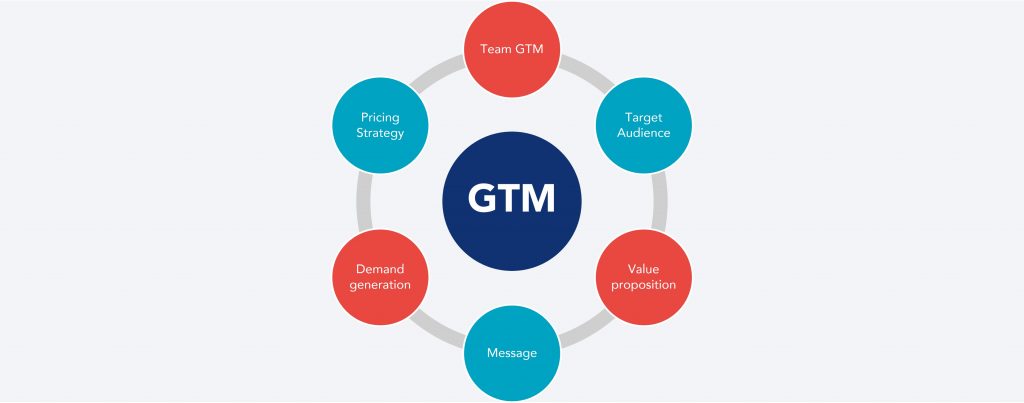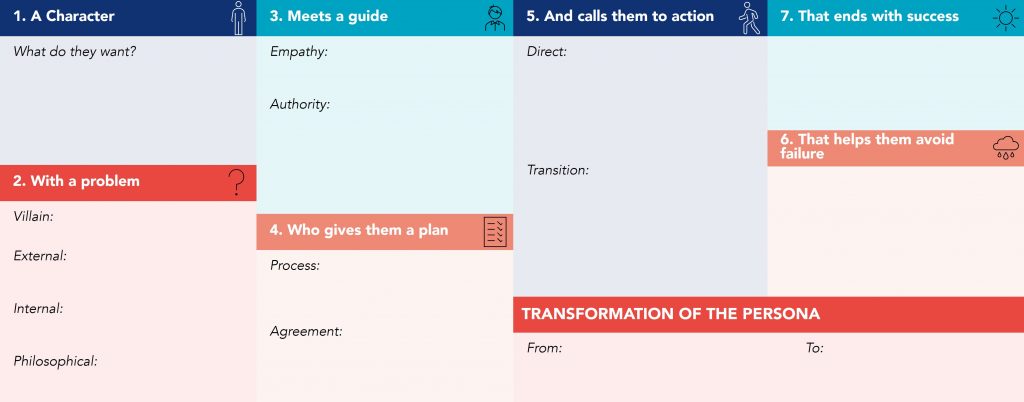Going into new markets or launching new products is a risk for any organization. Still, a well-structured Go To Market (GTM) strategy can minimize this risk and increase the likelihood of success.
A good GTM strategy helps the company focus on the customer’s needs and on market opportunities, ensuring that the product or service is successfully launched and meets the target audience’s expectations.
An effective Go to Market process reduces launch costs, maximizes the return on investment, and to a competitive advantage.
What is a Go To Market Strategy?
A Go to Market strategy or process introduces a product or service into the marketplace efficiently and effectively.
It is the process by which a company develops a detailed plan to promote and sell a particular solution to a specific target audience through the appropriate channels, using internal and external resources while trying to gain a competitive advantage over the competitors.
How important is the Go To Market for the business?
A Go To Market strategy is crucial for all organizations that find themselves in one of the following situations:
- Launching a new product in an existing market;
- Launching an existing product in a new market;
- Launching a new product in a new market.
A GTM clarifies why the company is launching the product, who is the target audience, what its positioning is, and how to tackle the work of encouraging customers to buy and use the product. It also compels one to think about the problems customers face and that the product will solve and helps to ensure that one offers the best possible buying experience.
The main benefits of a good GTM strategy are:
- A clearly defined plan and direction for all stakeholders;
- The reduction of the time to market for product or service market launch;
- The increase of the success probability of the launch;
- The reduction of the costs generated by failed launches;
- The improvement of the ability to react to changes and consumer patterns;
- A good customer experience;
- A defined path for growth.
In short, the Go To Market offers several benefits to companies, enabling them to launch products or services more efficiently and maximize the return on investment.
How to implement a good Go To Market strategy?
As mentioned, the GTM process is essential for the success of companies because it allows them to reach their target audience efficiently and generate revenue with their products or services. The Go To Market process generally involves the following steps:
- Create the GTM Team;
- Define the target audience;
- Develop the value proposition;
- Develop the message;
- Generate demand;
- Define the pricing strategy.

Create the GTM Team
A Go To Market Team is a group of people within the organization responsible for planning, developing, and executing strategies to launch a product or service into the market.
The specific functions of the team may vary depending on the company but generally include the following:
- Marketing: responsible for creating the messages, developing and executing the marketing strategies, and analyzing market trends and competition;
- Sales: responsible for selling the product or service to the customers and supporting the customer’s buying process properly;
- Product management: responsible for defining and developing the product or service, identifying target markets, and determining pricing and distribution strategies.
To summarize, the marketing team attracts potential customers, the sales team closes deals, and the product managers ensure the product has the features the target audience needs. Occasionally there may be a need to involve other teams.
MARKETING
Marketing plays a relevant role in the GTM process. Here is a highlight of the activities managed by the marketing:
- Define the target audience and market;
- Define the value proposition;
- Develop the messages;
- Define the channel mix;
- Execute marketing campaigns and improve them continuously to reduce the cost of customer acquisition.
Marketing is usually also involved in internal and customer content, including research articles, blog posts and webinars, sales scripts, and case studies.
SALES
Sales are responsible for closing deals. The entire team must convince customers that the product offers the best solution to the customer’s problem and support the buying process.
The primary responsibilities of the sales team are:
- Convert leads into customers;
- Ensure customer retention;
- Provide feedback on how customers react to the product or the buying process.
The way to work with the sales teams depends on the average purchase value. Having dedicated people involves a significant investment and usually only pays off if the average purchase value is high. Typically, in B2B sales, it makes sense to have a sales team; however, in B2C sales, it is often not worth the investment.
First, one needs to have a clear sales process, defined indicators, and targets so the team can track performance over time and see if the go-to-market initiative can achieve the defined goal. Data analysis is fundamental to adapting tactics and strategies and the team itself, according to the evolution of results.
When the average purchase value is low, sales teams usually play a minor role. Typically, another transaction mechanism, such as a channel/distribution partner, a physical store, or the company’s e-commerce, makes the final sale.
The company may also choose multiple channels, ensuring an excellent omnichannel experience is always necessary.
PRODUCT MANAGEMENT
The product management team works on the product, defining its main features and functionalities, developing the Unique Selling Proposition (USP), defining the development roadmap, and developing new ideas for improvement.
The primary responsibilities of Product Management are:
- Define the product vision;
- Create a roadmap for product development and introduce improvements after launch;
- Define the USP in terms of features and functionalities;
These are the three main functions involved in the Go To Market process.
Once the team is selected, it is necessary to align roles and expectations for everyone and define objectives and milestones for each person. It is also necessary to create standards for monitoring the GTM process, such as meetings (participants, frequency, duration, agenda, …), information sharing, and other governance-related topics.
Define the target audience
Before selecting a target audience, one must define a numeric target so as not to waste time on ineffective tactics and not to choose too small a target segment. The target helps to define the budget and make smarter decisions on how to allocate it, and, on the other hand, ensures alignment with the business goals.
After defining the target, it is necessary to study the ideal customer profile and quantify the total available market, the segmented market, and the market share. Ensuring the target market has sufficient demand to achieve the desired result is essential.
It is also at this stage that the identification and analysis of the competition takes place.
The first type of competition to analyze is the known competition, the companies, and solutions to which the organization loses customers after the target audience has decided to spend money on solving the problem. The company must identify and analyze the competitors in the chosen market category, recognizing their competitive advantages (economies of scale, marketing, and customer retention strategies). Then do a tactical analysis (pricing, packaging, features, and functionality), always focusing on the main competitors. It is also essential to understand the quality of the service and the reasons why people like or dislike the solutions.
The second type of competition regards alternative solutions. The target audience would use the competitive alternative solutions if the company’s product and those of its direct competitors did not exist. For example, for a company that makes sportswear for running, the competitive alternatives could be swimming, other “cardio” exercise activities, or other less specialized clothing.
The first thing to do is convince the target audience that they need what the company sells. Then, once inside the market, the company must convince the audience that its product is better than the competition’s.
At this stage, perform the Product Market Fit (PMF) analysis. This means evaluating the product’s fit with the market. A good PMF means that the company has accomplished three things: it has found a market for its product, delivered the product to its target audience, and satisfied customers with the product and how it solves their problems. To achieve the PMF, there is a series of testing, iterations, and exploring new ideas to identify the people who love the product and are excited to buy it.
For the PMF analysis, considering new products, it is usually necessary to create a prototype of a minimum viable product and use it to start testing with potential customers (show, ask for opinions and feedback, observe behavior).
Develop the value proposition
The value proposition is an essential component of the marketing strategy. It consists of all the benefits offered that create value for the customer, described in a single place.
The value proposition should address the question: “Why should I choose this product or service over its competitors?”
To build a good value proposition, perform these three exercises:
Describe the competitive advantage
A specific condition or circumstance places the product in a superior business position. To achieve a competitive advantage, it is necessary to have something that the customer values, something that cannot be easily replaced or copied by the competitors, and a profitable and sustainable solution for the company.
Calculate the monetary valuation
This means expressing in Euros the impact of the benefit offered to the customer. Converting the benefits received by the customer into a financial return for the customer by benchmarking the product against the competition.
Create the Unique Selling Proposition (USP)
The unique selling proposition is the single reason that distinguishes the offering from both the competition in the category and the best alternative. It must combine critical features, the customer’s benefit, and how it relates to the problem the product solves. The USP is highly specific. Defining a particular set of features/benefits makes it clear to potential customers why they should buy from you and not the competition.
A strong value proposition communicates the specific benefits the customer receives, explains how it solves their problems, and differentiates the offering from competitors in a compelling way. It should be concise and easy to understand.
Develop the message
The message announces the product. With a clearly defined audience and value proposition, it is simple to develop a strong message.
A strong message should describe to the target audience what the product does and why they should buy it, use a language known by the audience, show the audience that they have a problem, drive actions to solve it, and communicate the value offered.
To get the message across effectively, it should be simple. The A3 of the brand story is a methodology that serves as the basis for all the content production, simplifying the message and making it easier to talk about the product. This way, customers will be more attracted to the company’s products or services.

The goal is to discover the customers’ story and place the product at its core. A story is the only thing that can hold a human being’s attention for hours.
Demand generation
Demand generation attracts and captures potential customers’ interest in a company’s products or services. It involves getting the right people to say, “I would like to talk to someone about your product or service”.
Generally, the most effective way to “go to market” is on several channels simultaneously. A marketing strategy using multiple channels is usually more effective than identifying the most efficient stand-alone approach. By combining different marketing channels, companies can reach a wider audience and increase the effectiveness of their campaigns.
After selecting the channels, it is necessary to define a clear strategy for each and a specific action plan to implement them.
Define the pricing strategy
The pricing strategy must have multiple dimensions (variables that impact the price), such as the product, the use, the mount or volume, and the customer or contract. The ideal pricing structure has at least one of these dimensions, with limits set to meet specific use cases.
Differentiated pricing strategies should:
- Provide the user with a value equal to the price they are paying;
- Encourage users to upgrade to a higher level as they begin to derive more value from the product;
- Allow to sell the same product at different prices based on the value the customer will receive;
- Reward more extended contracts with better prices.
Generally, the factors that influence price classify into five categories:
- Organizational goals: Formulate the pricing strategy according to the business goals. For example, if the goal is to increase sales or make it harder for new competitors to join, a good strategy might be to reduce the price;
- Costs: Consider the costs, but the pricing strategy should not be based solely on costs. It is necessary to ensure that expenses are covered and that the margin is guaranteed;
- Customers: It is necessary to consider the value the target audience is willing to pay for the offer.
- Competition: It is inevitable for customers to compare the price of the presented solution with that of their competitors.
- Value chain: The value chain consists of various players, from suppliers to final distribution. A good management of the chain can help boost profits.
A best practice in setting prices is to ensure these are easy for the customer to understand. Customers must understand what they are paying for and the available options.
Another best practice is to anchor the price to something more expensive. For example, a product that replaces an employee’s work. Charging half the employee’s salary aligns the price with the value, making it easy to justify the price to customers.
Beyond the variables, prices play a clear role in negotiations. Discounts, offers, and favorable payment terms are levers that salespeople can use to close a deal. However, here we should remember approaches such as Value Selling that allow selling products at the right price.
The Future of Go To Market
Companies that strengthen Go To Market strategies through the smart use of technology improve profits and customer satisfaction.
Companies face an unavoidable opportunity to innovate traditional approaches to launching products or services. Now is the time to bring technology and science into GTM processes to increase efficiency, productivity, and growth.
Technology, such as CRM (Customer Relationship Management) or other tools, when combined with teams with good analytical skills, allows organizations to optimize various processes, such as identifying market opportunities and the best channels, personalizing communication with the target audience, creating an omnichannel experience, and measuring results to improve processes continuously.
Organizations should also focus on creating agile teams that can adapt quickly to market changes and remain competitive.
In conclusion, companies need to prepare for the future with technologies that enable them to have data and analytical insights to create an optimal Go To Market strategy and with agile teams with analytical capabilities that can react quickly to market changes and thus drive growth.
See more on Sales & Marketing
Find out more about improving this business area
